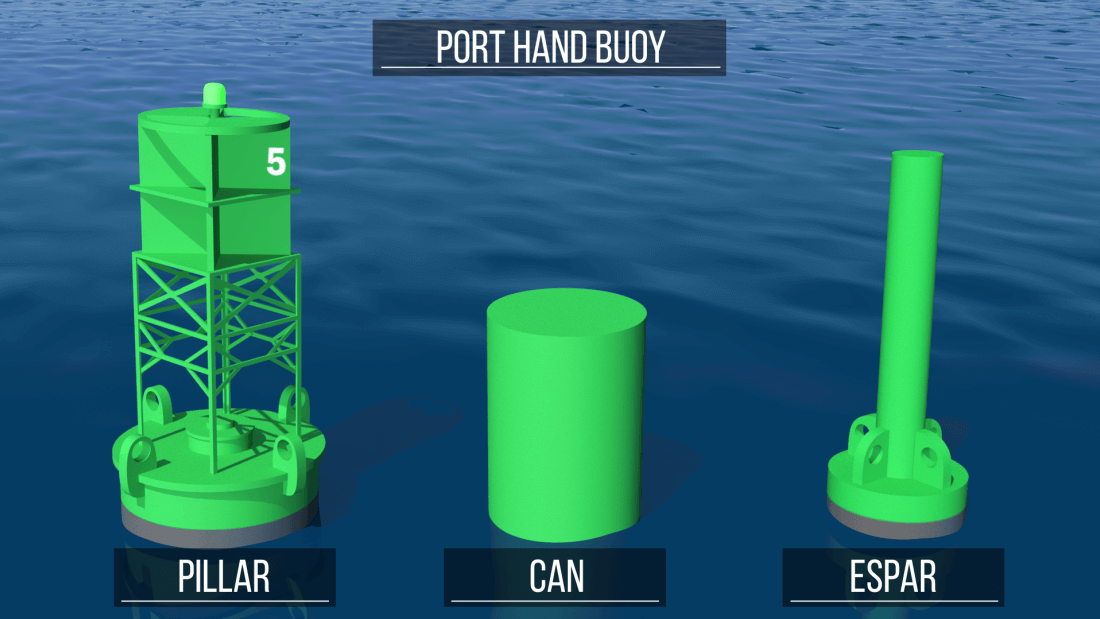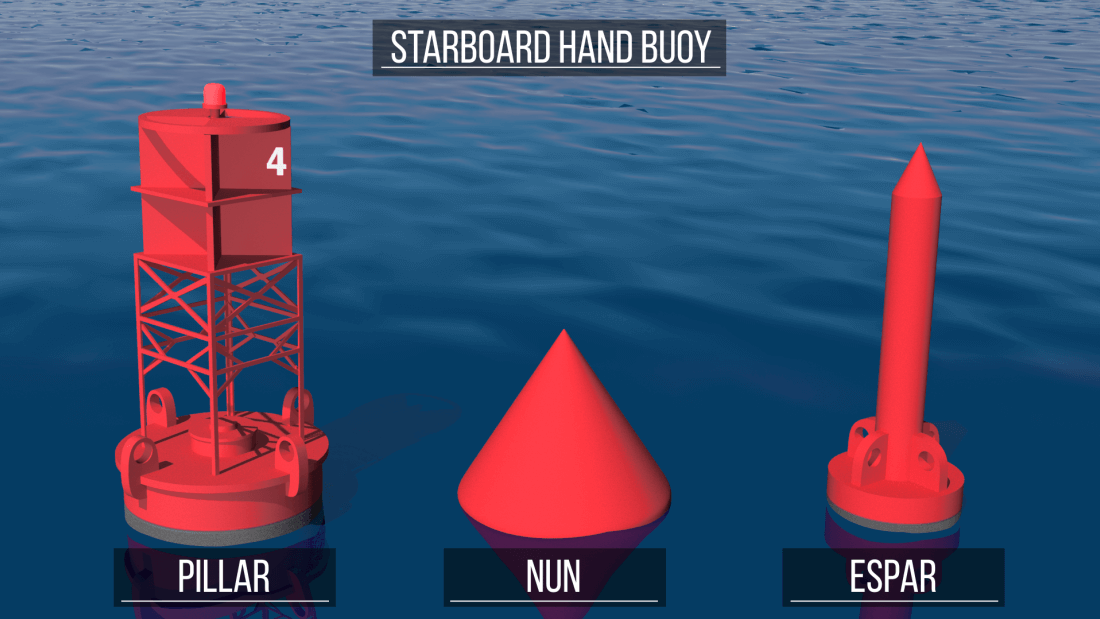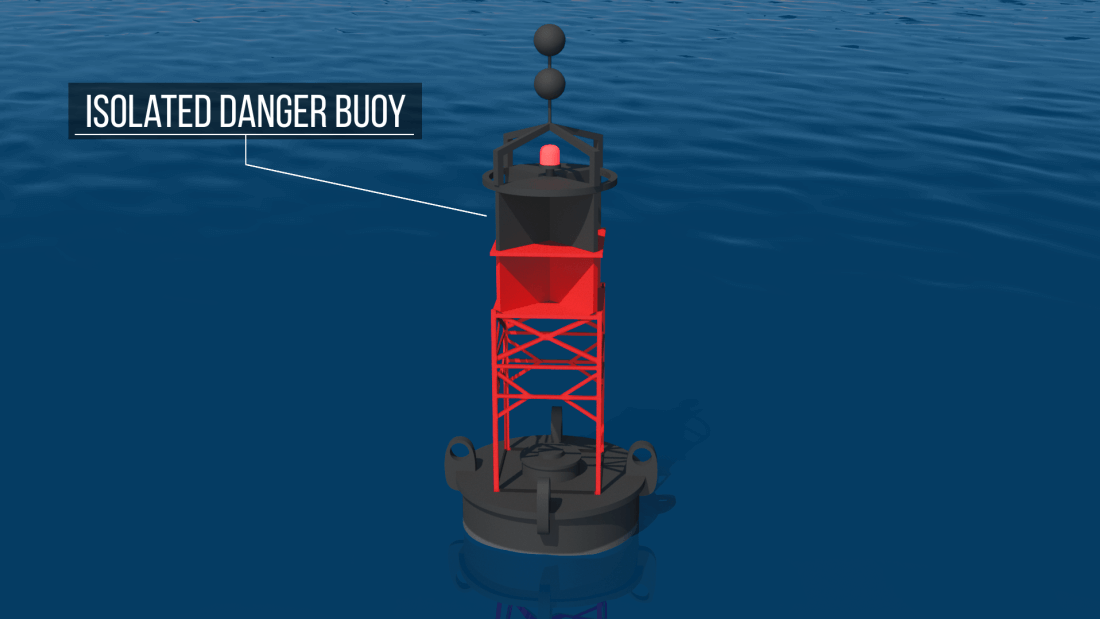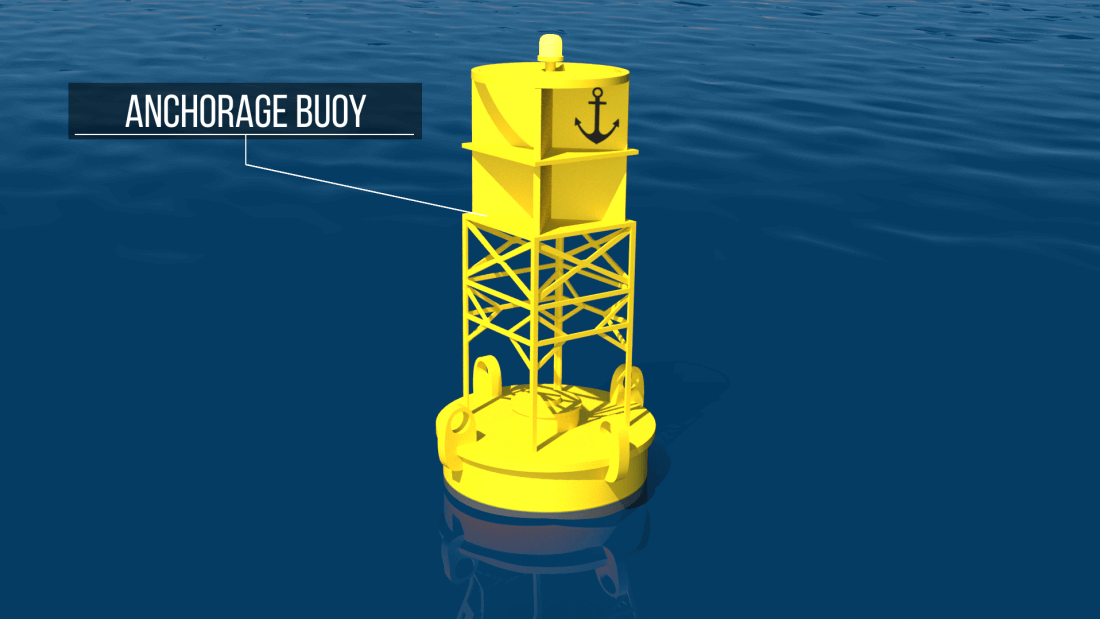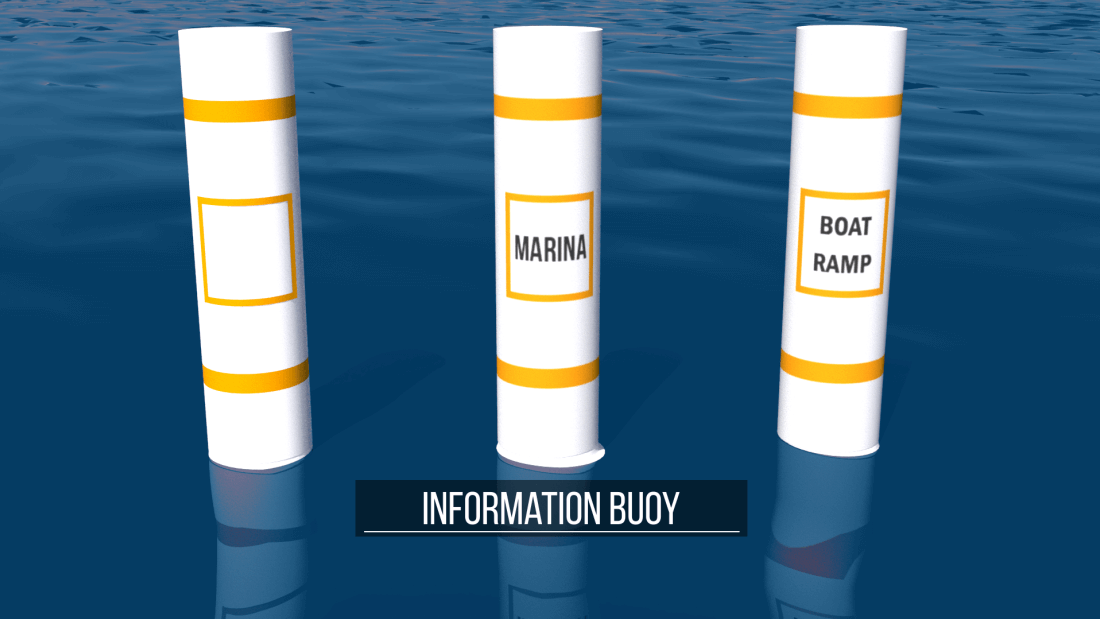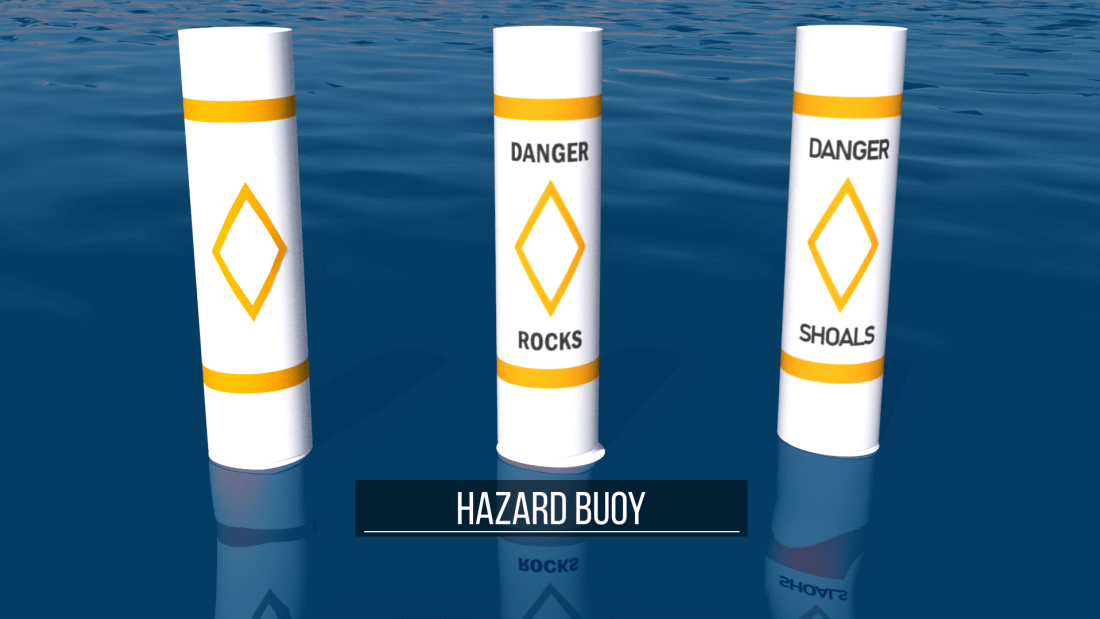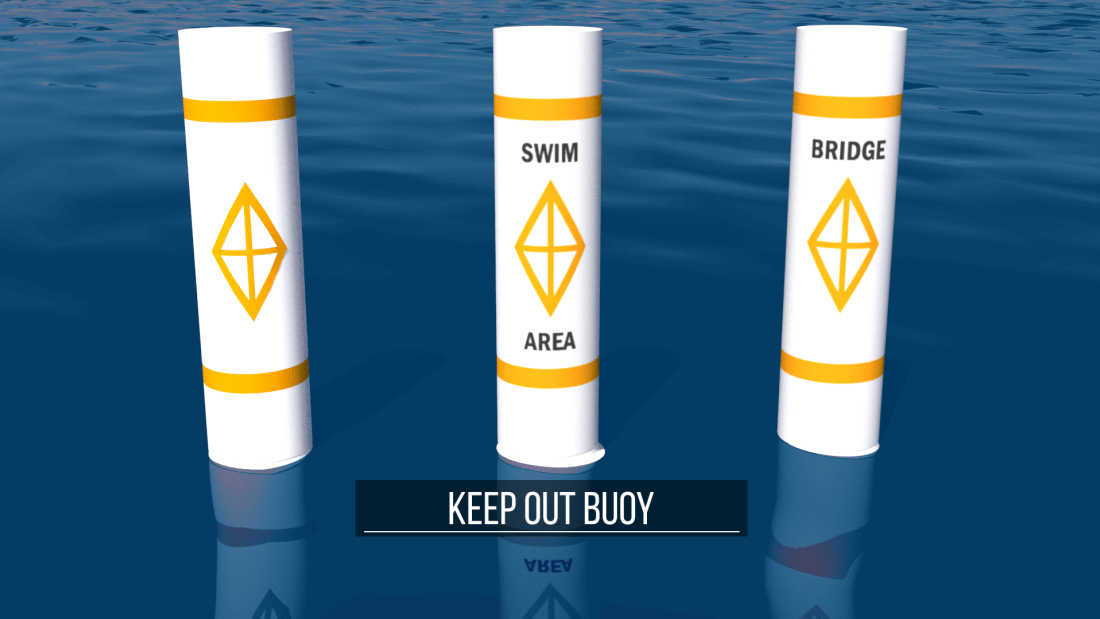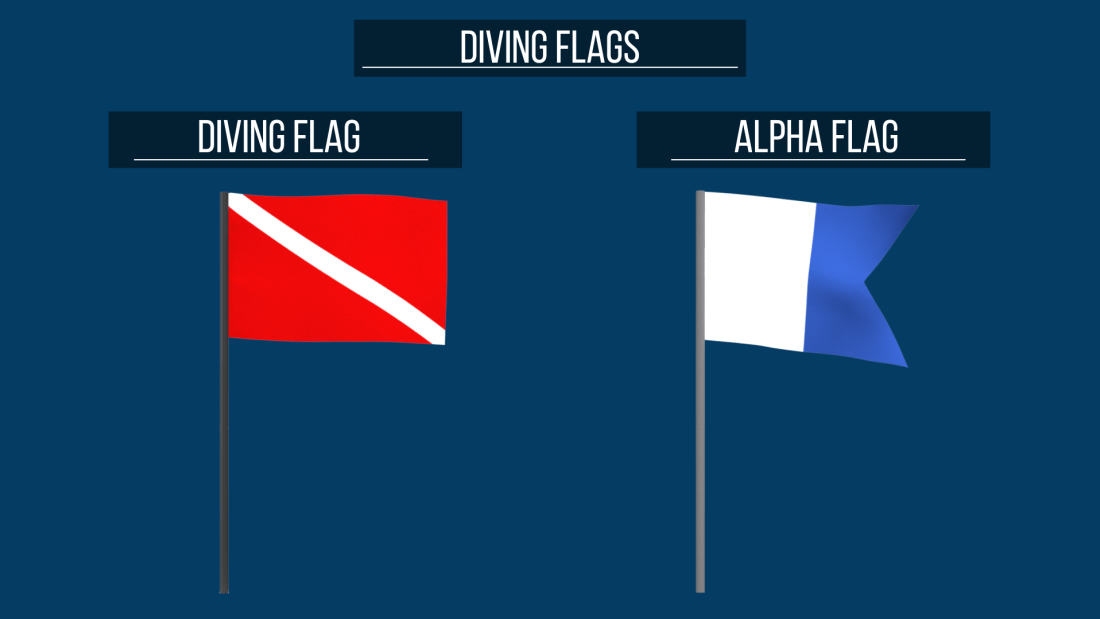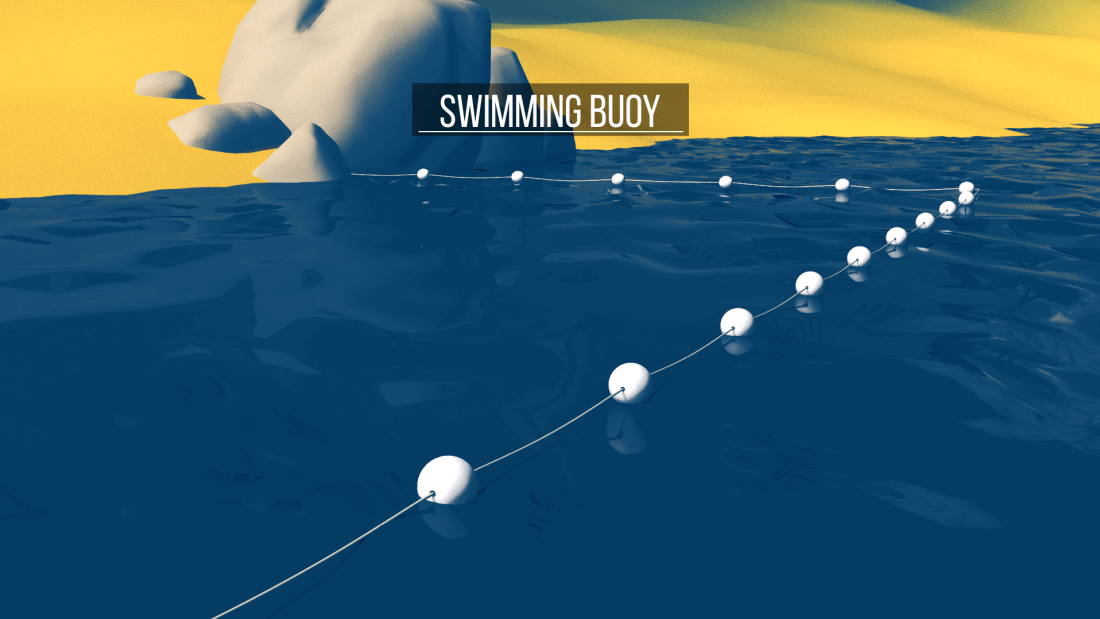Types of buoys for boats and their meanings What is the purpose of these buoys?
What are buoys used for?
Buoys and beacons are essential navigational aids that guide boaters and provide critical information for safe travel on the water. They come in various colors, shapes, and patterns, each conveying a specific meaning or instruction. Because these markers play a vital role in maintaining safety on waterways, in channels, and near shorelines, it is crucial for every boater to understand their purpose and how to interpret them correctly.
Lateral buoys system
The Lateral Buoy System is a standardized navigation system used to mark the edges of safe water channels. It helps boaters determine which side of a buoy to pass on when traveling upstream or entering from the sea. In North America (IALA Region B), red buoys mark the starboard (right) side and green buoys mark the port (left) side when returning from open water — remembered by the phrase “Red, Right, Returning.” Each buoy’s shape, color, and number indicate its position and direction of navigation, ensuring safe passage and preventing collisions or groundings in narrow or busy waterways.
Port hand buoy
A port hand buoy is a type of lateral buoy used to mark the left side of a navigable channel when traveling upstream or returning from open water.
-
A port hand buoy marks the port (left) side of a channel, or where a danger is located;
-
must be kept on the port (left) side of a pleasure craft when proceeding upstream;
-
is green;
-
If the buoy has a light, the color of the light is green;
-
top is flat;
-
If it is numbered, it bears an odd number;
-
displays identification letter(s);
-
can be shaped as: cans, spars or pillars.
Starboard hand buoy
A starboard hand buoy is a type of lateral buoy that marks the right side of a navigable channel when traveling upstream or returning from open water.
-
A starboard hand buoy marks the starboard (right) side of a channel or where a danger is located.
-
It must be kept on the starboard (right) side of a pleasure craft when proceeding upstream direction.
-
It is coloured red.
-
If the starboard buoy has a light, the color of the light is red.
-
Its top is cone-shaped
-
and if it is numbered, it bears an even number.
Port and Starboard hand day beacons
A port-hand day beacon and a starboard-hand day beacon are fixed navigational aids used to mark the sides of a safe channel during daylight. Unlike floating buoys, day beacons are mounted on piles, posts, or other structures above the water.
-
A port hand day beacon is similar to a port hand lateral buoy.
-
It points out the left side of a preferred channel.
-
It must be kept on the left when the craft is going upstream.
-
It is a black or green square centered on a white background with a green reflective boarder.
-
It has no lights and is visible only during daylight.
Port and Starboard Bifurcation buoys
A bifurcation buoy is used to mark the point at which a channel divides into two branches.
A bifurcation buoy is used to mark the point where a channel devises in to branches. You may pass this buoy on either side (port or starboard side) when moving upstream. It's coloured with red and green bands. The main or preferred channel is shown by the color of the top band.
Bifurcation buoys are used at junctions (where one channel splits into two channels). Naturally, one of the two channels will be wider, deeper, and safer; it is the main channel. The purpose of the bifurcation junction buoy is to indicate which channel is the main channel.
Port and Starboard junction day beacon
A junction day beacon marks a point where a channel divides.
Starboard junction day beacon
The starboard junction day beacon has a red diamond with a red triangle inside. It marks the junction of two channels and may be passed on either side. If the preferred channel is chosen, it should be kept to one’s starboard side when proceeding in an upstream direction.
Port junction day beacon
The port junction day beacon has a a red diamond with a green square inside. It marks the junction of two channels and may be passed on either side. If the preferred channel is chosen, it should be kept to one’s port (left) side when proceeding in an upstream direction.
Day Beacons are not buoys. They are affixed to a post, tree, rock, bridge support, etc.
They are similar to lateral junction buoys, they mark on which side they may be safely passed and are dependent on whether one is proceeding in an upstream or downstream direction.
Fairway buoy
A fairway buoy is a navigational aid that marks the center of a safe channel or the entrance to a harbor. It indicates that safe water exists on all sides, meaning boats may pass on either side when navigating carefully.
Fairway buoys are red and white vertically striped and are often spherical in shape, though they may also appear as tall pillars or spars. At night, they usually display a white light with a Morse code “A” signal (· —) or a slow flashing white light pattern.
Boaters use fairway buoys as reference points for entering channels, approaching ports, or identifying mid-channel routes in open water.
Special buoys
Isolated danger buoy
An isolated danger buoy marks an isolated danger on the water.
-
An isolated danger buoy is moored on an isolated danger (such as a wreck) in a secure or safe body of water.
-
It is used to mark an isolated hazard in waters which are otherwise navigable.
-
It is usually moored directly on or above the danger
-
It is used to mark a large rock, shoal or sunken ship
Anchorage buoy
An anchorage buoy marks mooring anchorage areas.
What is an anchorage buoy?
-
An anchorage buoy is a buoy that marks the outer limits of designated anchorage areas.
-
because an anchorage buoy marks the perimeter of anchorage areas, consult a chart for water depth.
Anchorage buoy color?
-
It's coloured yellow.
Anchorage buoy symbol?
-
Has a black anchor on it.
Anchorage buoy lights?
-
If it carries a light the light is yellow and it will flash once every 4 seconds.
Cautionary buoy
What does a yellow buoy mean?
A cautionary buoy, yellow buoy, marks an area where mariners are to be warned of dangers.
A cautionary buoy (coloured yellow) is a buoy that marks an area where boaters are to be warned of dangers such as firing ranges, raceways, seaplane bases, underwater structures or areas where no safe through-channel exists and where traffic separates.
Mooring buoy
A mooring buoy marks an area for mooring or securing vessels.
What colours appear on a mooring buoy?
A mooring buoy is white with an orange stripe.
Information buoy
An information buoy displays information to the driver of the boat.
-
An information buoy is a buoy that displays, by means of words or symbols, information of interest to the mariner.
-
An information buoy is white, with an orange square symbol on two opposite sides, and two orange horizontal bands, one above and one below the square symbols.
Hazard buoy
A hazard buoy marks random hazards to vessel operation such as rocks and shoal. It is white with an orange diamond on two opposite sides and two orange horizontal bands.
Control buoy
A hazard buoy marks random hazards to vessel operation such as rocks and shoal. It is white with an orange diamond on two opposite sides and two orange horizontal bands.
Keep out buoy
A keep out buoy indicates an area closed to navigation
-
The keep out buoy is a buoy that marks an area where boats are prohibited.
-
It is white. There is an orange diamond and an orange cross within it, on two opposite sides, and between two orange horizontal bands.
Diving flags
A diving buoy marks an area where diving activity is taking place. It is a flag coloured red with a white diagonal stripe, extending from the tip of the hoist to the bottom of the fly.
If a diving operation takes place from aboard a pleasure craft, Code flag Alpha or flag A (white and blue) from the International Code of signals which means “I have a diver in the water, keep well clear and at low speed” must be displayed.
Swimming buoy
A swimming buoy defines a swimming area.
-
A swimming buoy is a buoy that marks the perimeter of a swimming area.
-
It's coloured white.
-
if it carries a light, the light is yellow and it will flash once every 4 seconds.
-
May not be charted.
Cardinal buoys
Cardinal buoys point out a danger while referring to the four cardinal points.
Everywhere in Canada when you're navigating on the water, the cardinal buoys are used to indicate the location of the safest waters. For example, the north cardinal buoy indicates that navigable waters are north of the north cardinal buoy. It's coloured yellow and black and has a different flashing white color light on the top. How the strips are placed tells you which of those navigation markers buoy you encounter, i.e. a north cardinal buoy, a south cardinal buoy, a west cardinal buoy or a east cardinal buoy.
North Cardinal Buoy
-
A north cardinal buoy is located so that the safe water is to the north of the buoy
-
It is coloured black and yellow
-
The top is painted black indicating that it is a north buoy. The lower haft is painted yellow
-
If this buoy does not carry a light, it will be spar shaped
South Cardinal Buoy
-
A south cardinal buoy is located so that the safe water is to the south of the buoy
-
It is coloured black and yellow
-
The black is positioned on the bottom indicating that it is pointing south. The upper portion is painted yellow.
East Cardinal Buoy
-
East cardinal buoy is located so that the safe water is to the east of the buoy
-
It is coloured black and yellow
-
The black is positioned on the top and the bottom with the yellow portion in the middle to indicate that it is an east buoy
West Cardinal Buoy
-
West cardinal buoy is located so that the safe water is to the west of the buoy
-
It is coloured black and yellow
-
The black is positioned in the center to indicate that it is a west buoy The yellow is positioned top and bottom.
Would you like to learn more about boating safety and be able to drive a boat?
Aceboaters' boating safety course is accredited by Transport Canada to train students on the rules of navigation, buoys and their meanings, boating navigation lights, hazards, how to respond to emergency situations, boating laws and more.
Our course, once successfully completed, will give you the official pleasure craft operator card from Transport Canada, valid throughout North America.
I want my official Canadian boating license.
